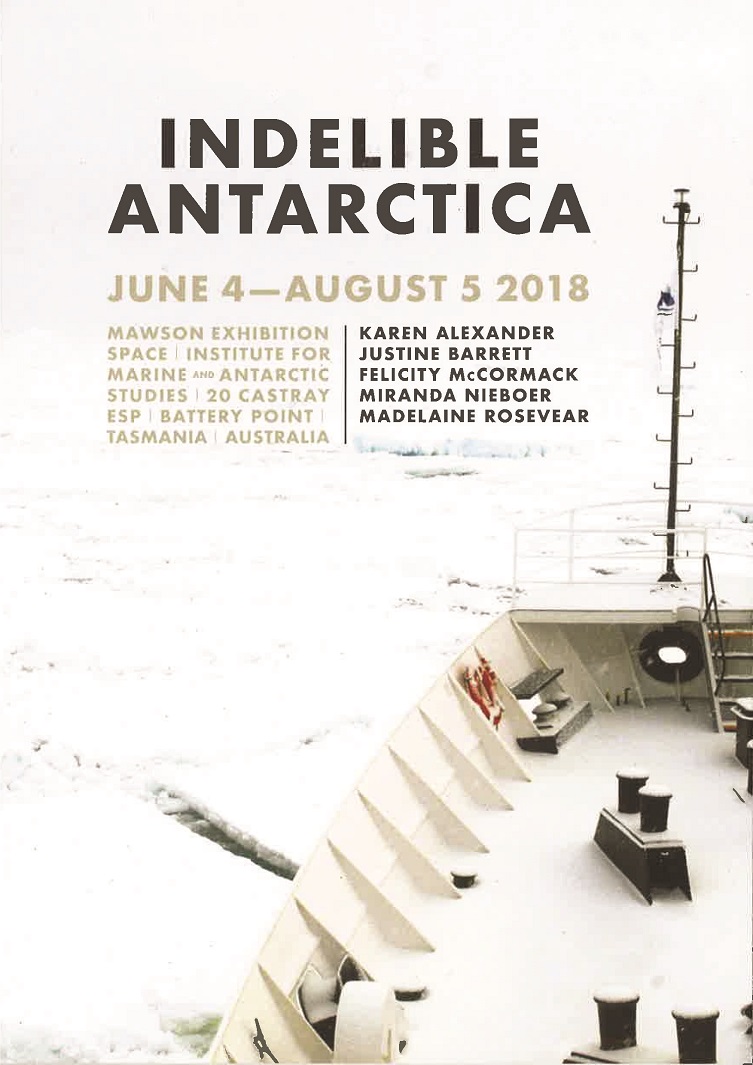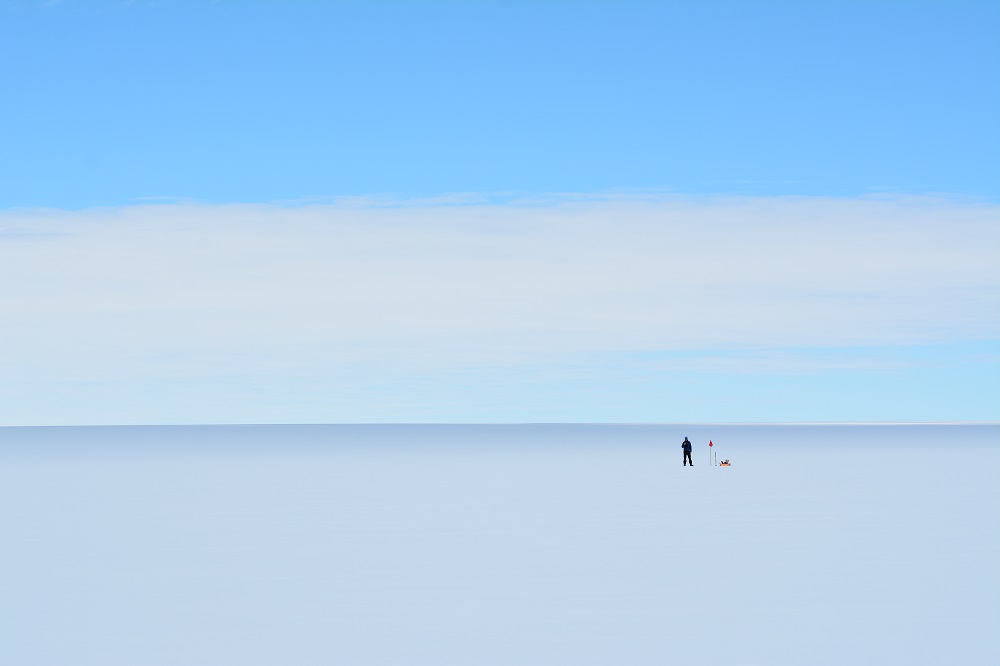
The fragility and complexity of how humans connect with one of the most remote places on Earth is explored in a new exhibition currently showing in the IMAS building in Castray Esplanade, Hobart.
The photos and video in the exhibition were compiled by five IMAS researchers who spent last summer in Antarctica working on a range of separate projects.
Karen Alexander, Justine Barrett, Felicity McCormack, Miranda Nieboer and Madelaine Rosevear sought to capture and showcase the connections that humans have with the Antarctic environment.
Their reflections have resulted in a unique exhibition, Indelible Antarctica.
The exhibition features 15 photographs and a video, reflecting the personal and insightful ways researchers interact with Antarctica and how the place impacts on people. (Image, below, credit Madelaine Rosevear)
 “Often a researcher’s connection to Antarctica is measured, sampled, tested and recorded, by way of the work they are conducting there,” exhibition curator Dr Annalise Rees said.
“Often a researcher’s connection to Antarctica is measured, sampled, tested and recorded, by way of the work they are conducting there,” exhibition curator Dr Annalise Rees said.
“However, researchers also see and sense what is occurring to this fragile environment and these women experienced first-hand how humans interact with the terrain.
“In several of the images of the Antarctic landscape, which are simply breathtaking, you can just make out the human element.
“In others, it is more obvious.
“What the researchers wanted to portray is the reciprocal relationship between people and place, and how they co-exist,” Dr Rees said.
Indelible Antarctica will be on display in IMAS’s Mawson Exhibition Space until August 5.
The exhibition is supported by a grant from the University of Tasmania’s SAGE Athena SWAN program.